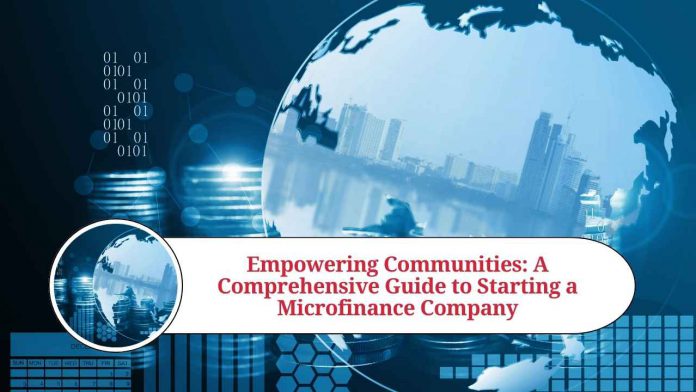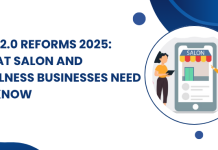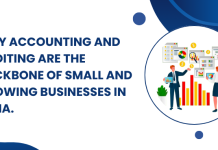Introduction:
In recent years, microfinance has emerged as a powerful tool for poverty alleviation and financial inclusion. If you are passionate about making a positive social impact and have a keen interest in finance, starting a microfinance company can be a rewarding venture. This blog aims to provide a step-by-step guide on how to start a microfinance company, from inception to successful operation.
Understanding the Microfinance Sector
- Exploring the concept of microfinance
- Studying the role and impact of microfinance in society
- Researching the regulatory environment and legal requirements
Conducting a Feasibility Study
- Assessing market demand and competition
- Identifying target customer segments
- Evaluating the financial viability and profitability of the venture
Developing a Business Plan
- Crafting a mission statement and business model
- Defining the range of financial products and services
- Formulating a marketing and growth strategy
- Detailing the organizational structure and management team
Registering and Legal Compliance
- Registering the microfinance company as a legal entity
- Obtaining necessary licenses and permits
- Complying with relevant financial regulations and reporting requirements
Securing Funding
- Estimating the initial capital requirement
- Exploring funding options such as loans, grants, and investments
- Developing a comprehensive financial projection and business valuation
Setting up Operations
- Establishing physical premises or a virtual office
- Procuring necessary equipment and technology infrastructure
- Building a team with relevant expertise in microfinance operations
Designing Products and Services
- Tailoring financial products to meet the needs of target customers
- Determining interest rates, repayment terms, and loan sizes
- Implementing risk management strategies and credit assessment procedures
Building Strategic Partnerships
- Collaborating with banks and financial institutions for funding or loan disbursement
- Forging partnerships with NGOs, community organizations, or government agencies for outreach and support
- Networking with industry associations and microfinance networks
Developing a Technology Infrastructure
- Implementing robust loan management systems and accounting software
- Integrating mobile banking and digital payment solutions
- Ensuring data security and privacy measures are in place
Creating a Strong Social Impact
- Establishing mechanisms to measure and monitor social outcomes
- Providing financial education and training programs
- Fostering a culture of responsible lending and ethical practices
Regulatory Compliance and Risk Management
- Staying updated with changes in financial regulations
- Complying with anti-money laundering (AML) and Know Your Customer (KYC) requirements
- Developing risk management policies and procedures
Marketing and Outreach
- Developing a branding strategy and creating a strong online presence
- Engaging in community outreach programs and awareness campaigns
- Leveraging social media platforms and other marketing channels
Hiring and Training Staff
- Identifying the skills and expertise required for different roles (loan officers, credit analysts, operations staff, etc.)
- Conducting a thorough recruitment process to attract qualified individuals
- Providing comprehensive training on microfinance principles, processes, and customer service
Establishing Credit Assessment and Monitoring Systems
- Developing robust credit assessment methodologies to evaluate borrowers’ creditworthiness
- Implementing systems to track loan repayment schedules and monitor delinquencies
- Setting up mechanisms for ongoing customer support and communication
Scaling Up Operations
- Planning for scalability and growth in line with market demand
- Assessing the need for additional branch offices or expanding into new regions
- Continuously improving operational efficiency and streamlining processes
Monitoring and Evaluation
- Establishing monitoring and evaluation frameworks to assess the impact of your microfinance operations
- Collecting data on key performance indicators (KPIs) such as loan repayment rates, client satisfaction, and social outcomes
- Using data-driven insights to refine strategies and make informed business decisions
Nurturing Relationships with Clients
- Prioritizing customer service and building strong relationships with borrowers
- Offering financial literacy programs to educate clients on financial management and entrepreneurship
- Providing personalized support and guidance to help clients improve their livelihoods
Engaging with Stakeholders
- Actively participating in industry forums, conferences, and networking events
- Collaborating with government agencies to advocate for favorable policies and regulations
- Engaging with impact investors and social impact organizations for potential funding and partnerships
Embracing Innovation and Digitalization
- Keeping up with technological advancements and exploring digital solutions for efficient operations
- Leveraging mobile banking, online loan applications, and digital payment platforms
- Adopting data analytics tools to gain insights into customer behavior and improve decision-making
Adapting to Changing Market Dynamics
- Continuously monitoring and analyzing market trends and competition
- Being responsive to the evolving needs of your target customers
- Embracing innovation and adapting your product and service offerings accordingly
Conclusion:
Starting a microfinance company is a multifaceted endeavor that requires careful planning, thorough research, and a strong commitment to social impact. By following these additional steps, you can enhance the effectiveness of your operations, strengthen customer relationships, and contribute to the financial empowerment of underserved communities. Remember, a successful microfinance company goes beyond financial services—it strives to create lasting positive change in people’s lives while ensuring sustainability and responsible practices.
Frequently Asked Questions (FAQs)
What is microfinance, and why is it important?
Microfinance refers to the provision of financial services, such as small loans, savings accounts, and insurance, to low-income individuals and underserved communities. It is important as it promotes financial inclusion, empowers individuals to start or expand businesses, and contributes to poverty reduction.
What legal requirements are necessary to start a microfinance company?
The legal requirements may vary depending on the country or region. Generally, you would need to register your microfinance company as a legal entity, obtain the necessary licenses and permits, and comply with financial regulations and reporting obligations.
How can I secure funding to start a microfinance company?
Securing funding for a microfinance company can be achieved through various means, including approaching banks or financial institutions for loans, seeking investments from impact investors or venture capitalists, or applying for grants or subsidies from government or philanthropic organizations.
How do I determine the interest rates and repayment terms for microfinance loans?
Setting interest rates and repayment terms requires careful consideration. Factors such as the cost of funds, operational expenses, risk assessment, and market conditions should be taken into account. It is important to strike a balance between affordability for borrowers and sustainability for your microfinance company.
What steps should I take to manage the risks associated with microfinance lending?
Managing risks in microfinance involves implementing sound credit assessment procedures, conducting thorough due diligence on borrowers, maintaining a diversified loan portfolio, establishing effective risk management policies and procedures, and regularly monitoring loan repayment patterns.
How can I measure the social impact of my microfinance operations?
Measuring the social impact of your microfinance company involves establishing monitoring and evaluation frameworks. Key performance indicators (KPIs) such as the number of clients served, increase in income levels, job creation, and improvements in living standards can be tracked and evaluated to assess the social outcomes of your operations.
Can I partner with other organizations or institutions to enhance my microfinance services?
Yes, partnering with banks, NGOs, community organizations, or government agencies can enhance your microfinance services. Collaborations can provide access to additional funding sources, expertise, technology, and outreach opportunities, enabling you to reach more underserved communities effectively.
How important is technology in microfinance operations?
Technology plays a crucial role in streamlining microfinance operations. Implementing loan management systems, accounting software, mobile banking solutions, and digital payment platforms can enhance efficiency, reduce costs, and improve accessibility for borrowers.
How do I build trust and credibility in the microfinance sector?
Building trust and credibility is essential in the microfinance sector. It can be achieved by transparent and responsible lending practices, maintaining high ethical standards, providing excellent customer service, and actively engaging with borrowers and the community.
How long does it take for a microfinance company to become profitable?
The time it takes for a microfinance company to become profitable can vary based on several factors, such as the market demand, competition, the efficiency of operations, and the repayment patterns of borrowers. Generally, it can take a few years for a microfinance company to achieve profitability, and continuous efforts to attract borrowers and manage costs are crucial during the initial phases.




















